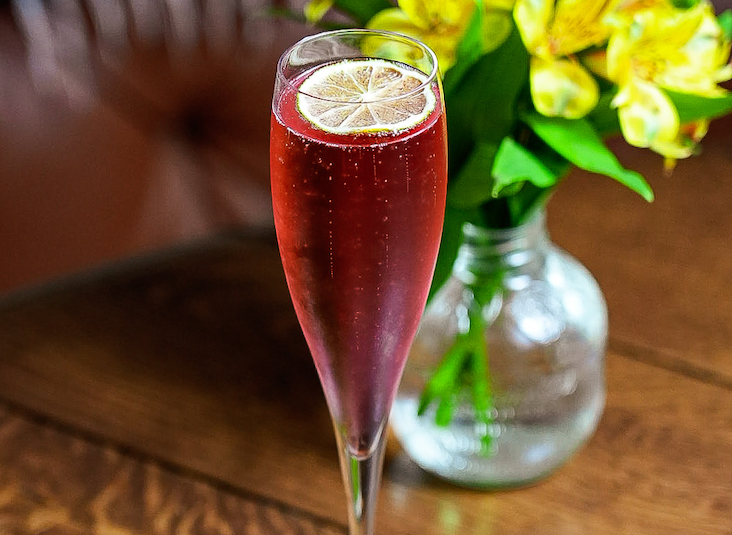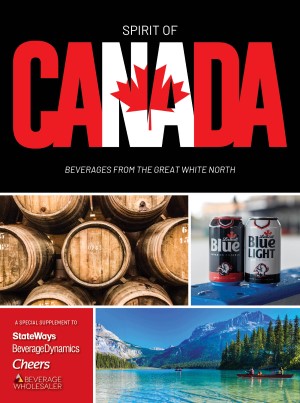Successful wine by-the-glass programs tend to have one trait in common: they encourage customers to enjoy the right wine in the right portion at the right time and at the right price.
Creating that perfect scenario yields numerous benefits. A good selection of glass pour options opens a world of food pairing possibilities. They satisfy the desire for customized food and beverage experiences, introduce new varietals, regions and producers and make it possible for guests to sample special wines at a fraction of the bottle price. When properly presented and executed, they also can deliver a significant boost to the bottom line.
Some of the better by-the-glass lists today are balanced between familiar and novel choices and engineered for upselling. Operators may delve into alternative pour formats, such as half glasses and flights, or show extra care by presenting the bottle at tableside when pouring. Whatever their unique characteristics, they’re all strategic in hitting the sweet spot of right wine, right portion, right time and right price.
At Pappas Bros. Steakhouse in Dallas, a list of 33 wines by-the-glass is the first glimpse for many customers of a monumental wine program with 2,250 selections and a 30,000 bottle inventory. “We offer a broad worldwide selection,” says wine director Barbara Werley, M.S. To confirm the guest’s selection and add meaningful panache to by-the-glass service, she makes it a point to present the bottle to the guest before pouring.
Part of the rationale for a massive by-the-glass collection is creating room for the unusual. How about a big white with steak? “We have the Jean Louis Chave Hermitage Blanc 1993, still showing quite well,” says Werley. Cult wine fan? Three Rings 2004 Cabernet, priced at $12, is made by the renowned Australian vintner Chris Ringland and offered only at Pappas Bros. “It’s kind of cool to have something he’s made just for us,” says Werley.
During the April EDS Byron Nelson Golf Championship in Dallas, she promoted glasses of Cirrus Syrah, a celebrated South African wine venture partially owned by golfer Ernie Els. Customers also can taste one of Napa Valley’s most tightly allocated wines by splurging on a $65 glass of Caymus Vineyards 2002 Special Selection Cabernet Sauvignon.
An operator doesn’t have to break the bank to offer good, distinctive pours, however. “I’m always looking for great wines that aren’t a lot of money,” says Werley. She recommends shopping for buys in regions like Chile, Argentina, South Africa and Australia.
“If you’re a more modest restaurant, you might promote a grape variety people know but a producer they don’t,” advises Werley. “As you move up the food chain, maybe you’ll try an unusual varietal from an unusual producer or from an unusual country, like Chile.”
Value & Variety
Guests often look for value on a by-the-glass list, but they also look for something special. “I’m always going to offer a choice of price points and/or regions in the same varietal character,” notes David Alphonse, vice president of beverage at Back Bay Restaurant Group, a Boston-based multi-concept operator with 34 restaurants spread among seven different dining concepts. Today’s customer expects to be offered choices, he points out. He facilitates the selection process by seeding the list with popular, high-quality wines rather than obscure examples.
“To me, when you go into double figures for wine by the glass, it has to be a great wine with a great reputation and something of a value,” says Alphonse, noting that this is especially true as the economy tightens and people look to eek greater value out of their wine purchases, even at the high end. “The higher the price is, the more I’d rather have something with a higher reputation, like the Jordan Cabernet, which justifies the $15 per glass price.”
For example, there’s a Chianti for all comers at Papa Razzi, Back Bay’s Italian trattoria concept, beginning with Melini 2006 Borghi d’Elsa Chianti, priced at $5.75 per glass, moving up to 2005 Piccini Chianti Solco Classico, priced at $6.75, and ending with wine from a single vineyard in the region, Vignamaggio Terre di Prenzano Chianti Classico, which sells for $9.50. The $6.75 Donna Laura 2006 Ali Sangiovese is added for good measure; the varietal wine is made from Chianti’s signature grape.
Papa Razzi also gets mileage from four Vino Bianco and four Vino Rosso tasting flights, each with three two-ounce pours of white or red wine based around a stylistic or varietal theme. According to Alphonse, similar to those who shop the by-the-glass list, customers who sample wine flights have a better grasp of the differences between producers and are more apt to trade up in their future wine orders.
Wine label recognition and value are key selection criteria for Alphonse. “The consumer is more educated now and wants to make a choice,” he says. This means wines must differentiate themselves on the by-the-glass menu. “I want wines that jump out and sell themselves, either for the price point or by name recognition.”
A list with hot-button names benefits not only the customers—it also assists bartenders and servers who sell wine in all Back Bay concepts, especially given that only the two Abe & Louie’s Steakhouses have a sommelier. “They’ve got the fish special, the pasta special and the appetizer special,” says Alphonse. “There’s only so much they can remember. Even though we feature a certain wine each day, I still want the wines to sell themselves.”
Jeff Groh, sommelier at Heathman Restaurant & Bar in Portland, Ore., takes it one step further. “More than any other area of a wine program, wines by-the-glass must be able to upsell themselves,” he declares. In an interesting twist, he uses French labels as house wines and Northwest wines as upsell choices, noting that the latter appeals to business travelers staying at the Heathman Hotel, who like to sample local wines.
Differentiating Factors
At Heathman, by-the-glass wine choices reflect the restaurant’s dual focus on French cuisine and Pacific Northwest products. “It made sense for us to marry those two ideas in our by-the-glass program,” says Groh.
Three tiers of chardonnay are menued by-the-glass at Heathman. Entry level is Burgundy’s Laboure Roi Mâcon-Villages, priced at $7.75. In the middle is Durant Vineyards, a small producer in Oregon’s Dundee Hills that’s starting to make a name, priced at $12. On top is Ken Wright Cellars Celilo Vineyard, a Washington wine brand made by a prominent Oregon vintner, priced at $14.95.
As one ascends, the wines become more nuanced. “With the Durant, you see more lees flavors and more oak,” says Groh. “The Ken Wright Cellars is leaner and there is a perceived higher quality because it’s a vineyard-designated wine.”
At 21 choices, Groh believes his by-the-glass list has grown as large as it can without increasing difficulty in keeping wines fresh, even with an argon gas system to preserve open bottles. He feels free to expand his dessert wine pours, however; 39 now are offered. He notes that dessert wines can be held longer because they can be refrigerated. In addition, styles such as colheita port and Madeira keep for longer periods after opening because they’ve been oxidized in the cask.
“This year, I think we’ll have some dessert wine flights to get people to order more of them by the glass,” says Groh. “Dessert wines are a great revenue generator. And when you offer flights, it makes it more exciting for guests.”
Adapting an Old World wine custom to the modern age is Frasca Food and Wine in Boulder, Colo. The 65-seat fine dining restaurant is inspired by the gastronomically rich region of Friuli-Venezia Giulia in northern Italy. Co-owner and sommelier Bobby Stuckey, M.S., taps the region not only for crisp and classy white wines like tocai Friulano and pinot grigio, but also for its traditional aperitif, a short pour of tocai called a tajut, which is essentially a half portion. To encourage flexible food matching, Frasca pours tajuts of any of its 17 white or red glass choices, which range from $8 to $18, at half the glass price.
Guests often create impromptu wine flights with the tajuts to go with Frasca’s $62 four-course menu of Friulian-inspired fare. They may peg a tajut of Anselmi 2006 Tocai Friulano, $3.50, with prosciutto, a classic pairing. More luxuriously, they might match a tajut of the Tuscan red Casanova Della Spinetta Sassontino, $9, with pork belly. “You can match wines with three courses for less than $20,” says Stuckey.
The modest pricing fits Stuckey’s philosophy of building affordable options into the wine by-the-glass program. “We always want to have a $6 or $7 great glass of tokai Friulano that drinks like a $15 glass,” says Stuckey. “Even though we’re a higher end restaurant, we’re always trying to find delicious things under $10 a glass.” l
James Scarpa is a Chicago-based freelance writer who frequently covers food and beverage topics.
Jeff Groh, sommelier at Heathman Restaurant & Bar in Portland, Ore., selects French vintages as the house wines and positions Northwest wines as the trade-up option for by-the-glass guests looking to explore.
Flights of tajuts—half-pours of wine—pair well with a four-course menu at Italian-inspired Frasca Food and Wine in Boulder, Colo., driving wine sales and broadening guest horizons.




